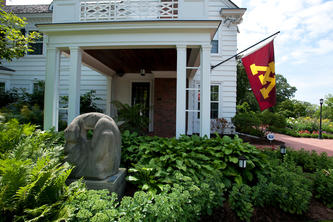
Many of us think of earthworms as helpful garden assistants, mixing soil and providing nutrients for our plants. But forests in Minnesota and other parts of North America, where glaciers wiped out native species, are threatened by invasive European earthworms.
These earthworms break down leaf litter—the raw material for soil—and mix the soil in destructive ways, hurting native understory plants like ferns, wildflowers, and tree seedlings. This in turn harms animals that depend on the forest plants, from songbirds to the iconic moose.
Work by associate professor Kyungsoo Yoo and graduate student Adrian Wackett in the Department of Soil, Water, and Climate at the University of Minnesota—in collaboration with scientists in Sweden—is helping us understand earthworm invasion as a global issue.
Their research shows that some of the same earthworm species transforming North American forests have also invaded far northern arctic regions of Norway, Sweden, and Finland (Fennoscandia). They identified numerous locations with active, ongoing earthworm invasions.
These areas were also glaciated, but settlers from southern and central Europe came to farm and brought non-native earthworms with them. Modern gardens, composts, and fishing sites have also helped spread the “unseen invaders.”
“We can identify invasion points pretty easily,” says Wackett. “We target old farm sites or modern cabin lawns, and in many cases observe a radius where the worms have spread out into surrounding birch forests.”
Also, in her undergraduate research project, senior Cassandra Tieman found multiple species of European earthworms in a nonglaciated area of southeastern Minnesota—where she thought she might find native species—“indicating [the invasive earthworms] have widely spread across the region.”
The researchers hope that illuminating the problem of invasive earthworms will lead to measures to restrict their spread and protect critical habitat, both in Fennoscandia and closer to home.
- Categories:




